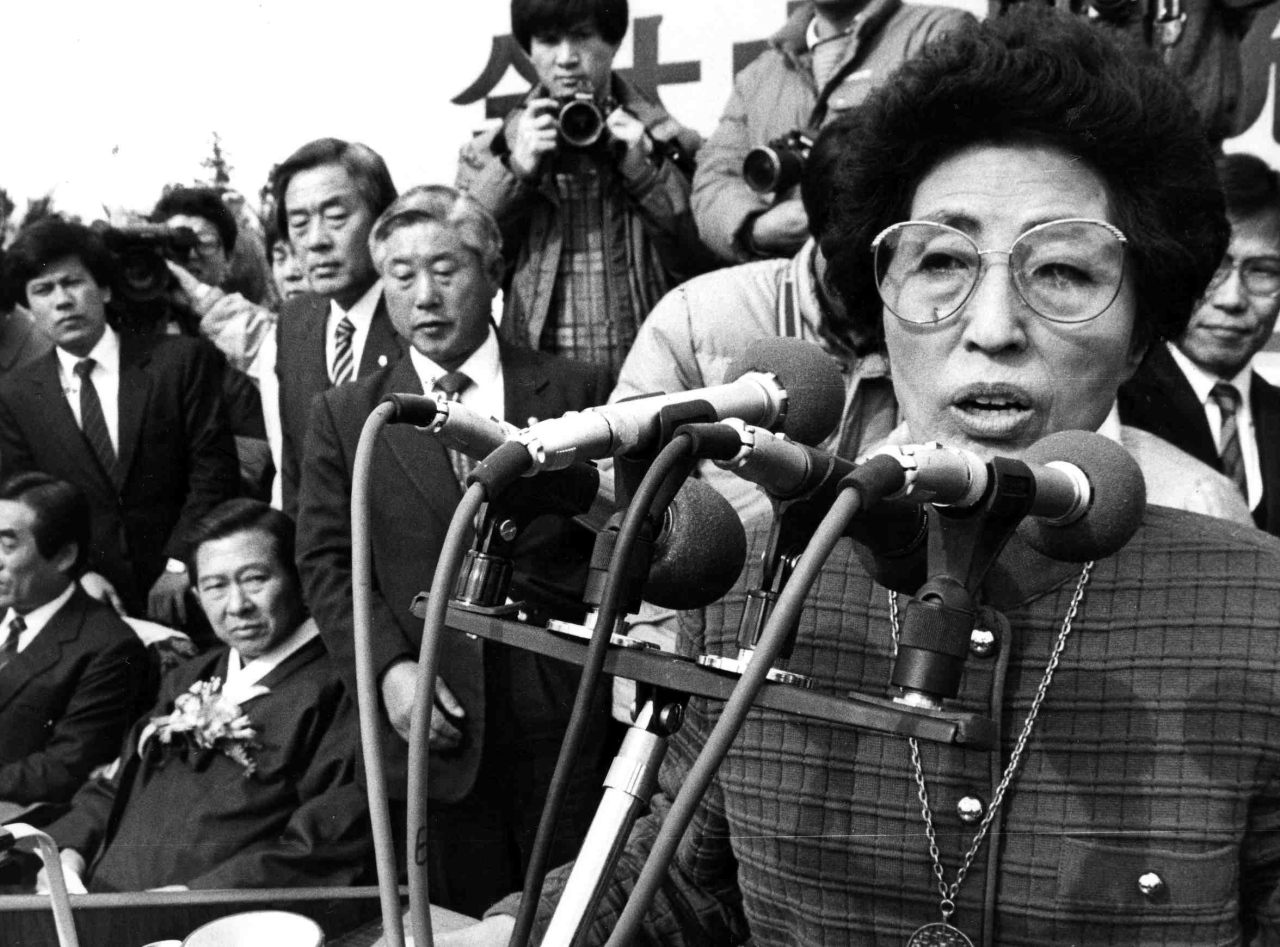Lee Hee-ho was most often in the spotlight as late President Kim Dae-jung’s wife in the later parts of her life, but Lee was a champion of women’s rights whose beliefs and actions have left a lasting mark on Korean society.
Lee was born into a wealthy family in 1922 during the Japanese occupation of Korea. While Korea was a patriarchal society where women took second priority to men, Lee’s parents are said to have raised her without such bias.
Lee studied at a girl’s high school and went on to study at Seoul National University during the years between the 1945 liberation from Japan and the start of the Korean War in 1950.
According to her autobiography, it was her time at Seoul National University that instilled in her the passion for equal rights.
“Experience at a co-ed (university) made me realize the important fact that women should claim their own rights,” she wrote in her autobiography, saying that at the time women were “second-class citizens” in school and society alike.
During the 1950-53 Korean War, she fled to Busan and there she and other equal rights activists founded a young women’s association, beginning her long career as a champion for women’s rights.
It was in Busan that she first met Kim, who was at the time running a shipping company, but it wasn’t until a decade later that the two reconnected.
The war further strengthened her belief in the need for women’s rights, as the suffering of women was overshadowed by that of men who fought and died on the battlefields. Once the war was over, she went to study in the US. When she returned in 1958, her work as a women’s rights advocate began in earnest, working with the Young Women’s Christian Association. She went on to play leading roles in organizations such as the Korean National Council of Women and the Korean branch of the Pan Pacific South-East Asia Conference until 1972.
In the late 1950s and early 1960s Lee and Kim reconnected, and they married in 1962, a year after a military coup by Park Chung-hee, whose rise to power marked the beginning of political oppression against Kim.
Those around Lee opposed her marriage to Kim -- a politician out of office and a widower with two sons -- over concerns that marriage would hamper her work.
However, her passion for women’s rights was a linchpin of the marriage and collaboration with Kim.
“If politics was the path to realizing a dream and reason for existence for him, for me it was one of the ways for creating a harmonious society of gender equality,” she wrote in her autobiography.
“Rather than passionate love between a man and a woman, it was the belief in our shared dream that was the cord that tied him and me together.”
As Kim’s closest ally, Lee stood by his side as he was oppressed by the Park and Chun Doo-hwan regime that took power after Park’s assassination.
When Kim was framed for planning a revolt under orders from North Korea and sentenced to death in 1981, Lee undertook an international campaign to spare his life. Kim’s sentence was ultimately reduced to a life sentence, and in 1982 Kim sought asylum in the US, having pledged never to take part in politics in Korea.
In 1984, Kim returned to politics, and from 1987 he ran for presidency three consecutive times before being sworn in in 1997 on his fourth attempt.
Kim recognized Lee’s help as crucial to his political career on a number of occasions, and Lee’s input did not stop with her husband achieving his lifelong dream.
During Kim’s presidency, she is said to have influenced the Kim Dae-jung administration’s gender equality policies. Under Kim’s presidency, the Ministry of Gender Equality and Family was established, and Han Myeong-sook became the country’s first female prime minister.
After Kim’s death in 2009, Lee continued to play a part in inter-Korean relations. Kim had been the first South Korean leader to hold an inter-Korean summit, with then North Korean leader Kim Jong-il, and he implemented the Sunshine Policy that laid the groundwork for future inter-Korean projects and dialogue.
In 2011, Lee led the South Korean delegation to Kim Jong-il’s funeral in Pyongyang, where she met with Kim Jong-un, becoming the first South Korean to do so.
In 2015, Lee again visited North Korea, this time on invitation from Kim Jong-un.
Lee is survived by two sons, Kim Hong-up and Kim Hong-gul. Kim Hong-up is a former lawmaker, and Kim Hong-gul, president of the Korean Council for Reconciliation and Cooperation, heads the ruling Democratic Party of Korea’s committee on social unity.
Kim Dae-jung’s eldest son, Kim Hong-il passed away in April. Kim Hong-il and Kim Hong-gul were from the former president’s first marriage to Cha Yong-ae.
By Choi He-suk (
cheesuk@heraldcorp.com)








